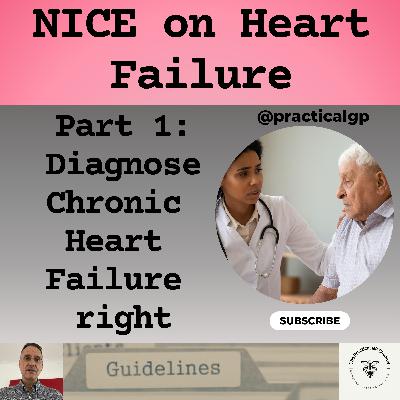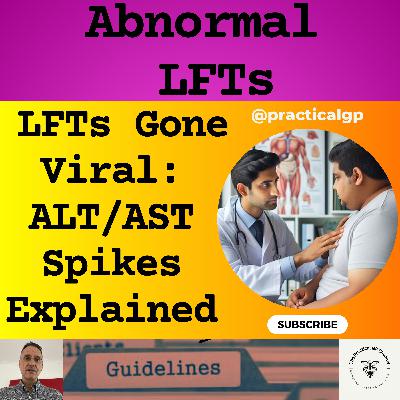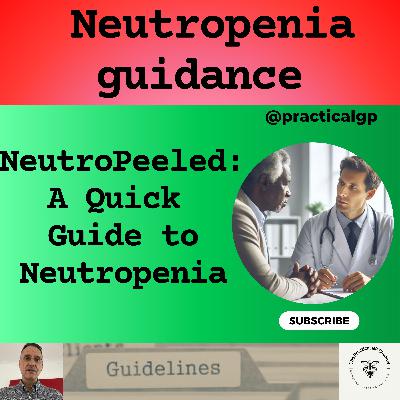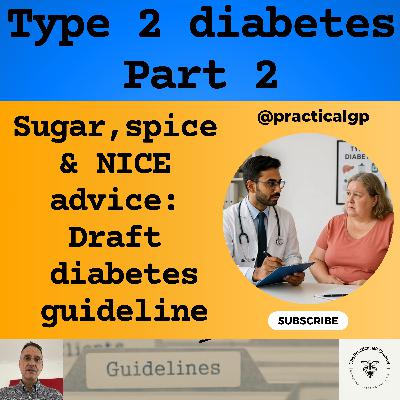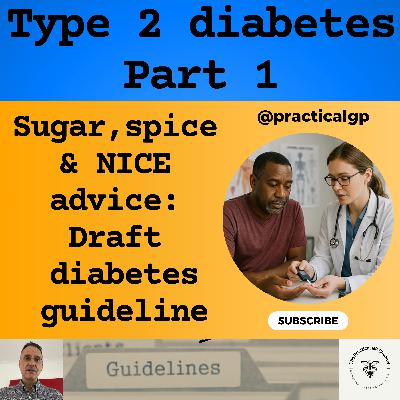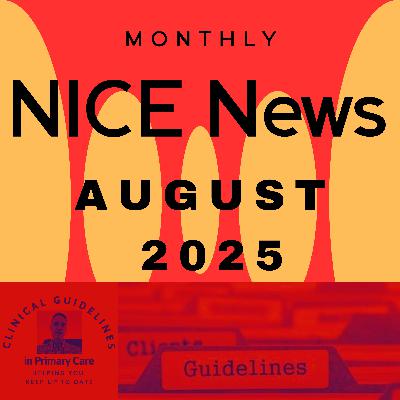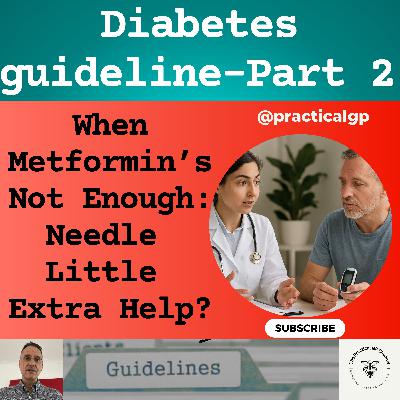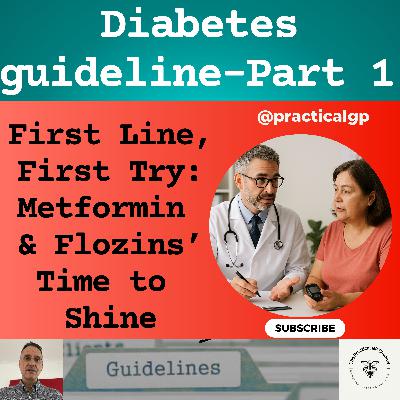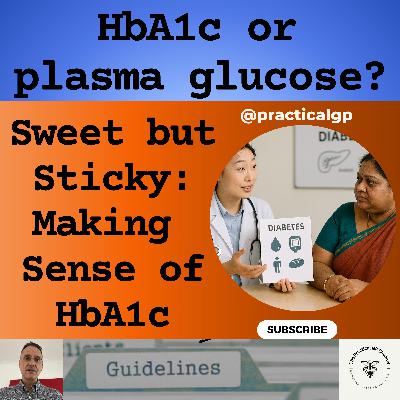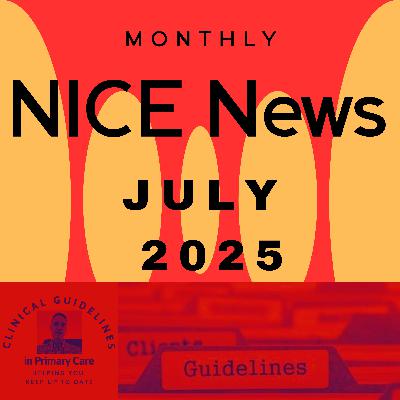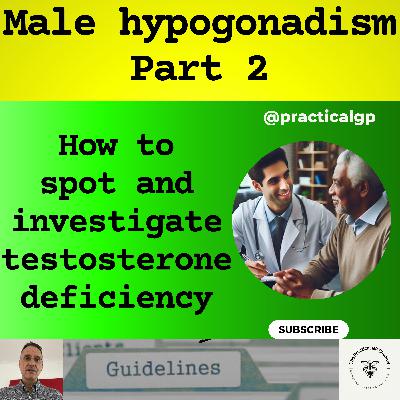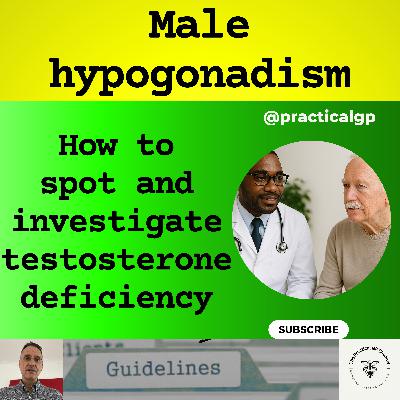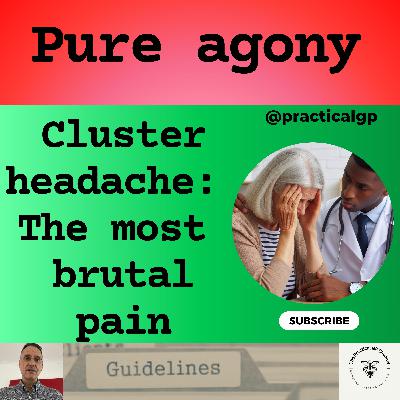Podcast - NICE on Heart Failure- Part 1 – Don’t Skip a Beat
Description
The video version of this podcast can be found here:
· https://youtu.be/hjKE4JAQM6c
This episode makes reference to guidelines produced by the "National Institute for Health and Care Excellence" in the UK, also referred to as "NICE". The content on this channel reflects my professional interpretation/summary of the guidance and I am in no way affiliated with, employed by or funded/sponsored by NICE.
NICE stands for "National Institute for Health and Care Excellence" and is an independent organization within the UK healthcare system that produces evidence-based guidelines and recommendations to help healthcare professionals deliver the best possible care to patients, particularly within the NHS (National Health Service) by assessing new health technologies and treatments and determining their cost-effectiveness; essentially guiding best practices for patient care across the country.
My name is Fernando Florido and I am a General Practitioner in the United Kingdom. In this episode I go through the NICE guideline on Chronic heart failure in adults: diagnosis and management [NG106], last updated in September 2025. Today’s episode focuses on the initial assessment and diagnosis.
The guidance on the remaining aspects of heart failure management will be covered in future episodes.
I am not giving medical advice; this video is intended for health care professionals, it is only my summary and my interpretation of the guidelines and you must use your clinical judgement.
Disclaimer:
The Video Content on this channel is for educational purposes and not intended to be a substitute for professional medical advice, diagnosis, or treatment. Always seek the advice of your physician or other qualified health provider with any questions you may have regarding a medical condition. Never disregard professional medical advice or delay in seeking it because of something you have read or seen on this YouTube channel. The statements made throughout this video are not to be used or relied on to diagnose, treat, cure or prevent health conditions.
In addition, transmission of this Content is not intended to create, and receipt by you does not constitute, a physician-patient relationship with Dr Fernando Florido, his employees, agents, independent contractors, or anyone acting on behalf of Dr Fernando Florido.
Intro / outro music: Track: Halfway Through — Broke In Summer [Audio Library Release]
- Music provided by Audio Library Plus
- Watch: https://youtu.be/aBGk6aJM3IU
- Free Download / Stream: https://alplus.io/halfway-through
There is a podcast version of this and other videos that you can access here:
Primary Care guidelines podcast:
· Redcircle: https://redcircle.com/shows/primary-care-guidelines
· Spotify: https://open.spotify.com/show/5BmqS0Ol16oQ7Kr1WYzupK
· Apple podcasts: https://podcasts.apple.com/gb/podcast/primary-care-guidelines/id1608821148
There is a YouTube version of this and other videos that you can access here:
- The Practical GP YouTube Channel:
https://youtube.com/@practicalgp?si=ecJGF5QCuMLQ6hrk
The NICE guideline on Chronic heart failure in adults: diagnosis and management [NG106] can be found here:
· https://www.nice.org.uk/guidance/ng106
Additional information on ARNIs can be found here:
Transcript
If you are listening to this podcast on YouTube, for a better experience, switch to the video version. The link is in the top right corner of the video and in the episode description.
Hello and welcome! I’m Fernando, a GP in the UK. In today’s episode, we are going to go through the NICE guideline on Chronic heart failure in adults, which was last updated in September 2025.
Today’s episode focuses on the initial assessment and diagnosis.
The guidance on the remaining aspects of heart failure management will be covered over forthcoming episodes so stay tuned.
Right, let’s jump into it.
And as we have just said, today we’re going to focus on how we diagnose heart failure.
We will obviously begin by taking a thorough history, performing a clinical examination, and arranging appropriate tests to confirm the diagnosis.
And we should start by measuring N-terminal pro-B-type natriuretic peptide, or NT-proBNP, in anyone with suspected heart failure. Because very high levels of NT-proBNP carry a poor prognosis, we will refer people with suspected heart failure and an NT-proBNP level above 2,000 nanograms per litre — or 236 picomoles per litre — urgently, for specialist assessment and an echocardiogram within two weeks.
We should refer people with suspected heart failure and lower NT-proBNP levels, between 400 and 2,000 nanograms per litre — that’s 47 to 236 picomoles per litre — for specialist assessment and an echocardiogram but this time to be seen within six weeks.
We need to be aware that an NT-proBNP level below 400 nanograms per litre, or 47 picomoles per litre, in an untreated person makes a diagnosis of heart failure less likely. We also need to remember that the level of serum natriuretic peptide does not differentiate between heart failure with preserved, mildly reduced, or reduced ejection fraction.
When NT-proBNP levels are below 400 nanograms per litre, we should consider alternative causes for the symptoms. If there’s still concern that the symptoms might be related to heart failure, we should discuss the case with a heart failure specialist.
We also need to be aware that there are factors that can affect the NT-proBNP level. Examples of factors that can reduce the level are:
· Obesity
· African or African–Caribbean ethnic background, or
· Treatment with certain medications. These include:
o Diuretics,
o Beta-blockers
o Mineralocorticoid receptor antagonists
o ACE inhibitors, ARBs and
o Angiotensin receptor-neprilysin inhibitors. And let’s just quickly say that Angiotensin receptor–neprilysin inhibitors, or ARNIs, are a relatively new class of medications used in the management of heart failure with reduced ejection fraction. At present, the only available one is sacubitril/valsartan which combines two mechanisms of action:
§ Sacubitril, which inhibits neprilysin — an enzyme that breaks down beneficial natriuretic peptides. By blocking neprilysin, sacubitril helps with vasodilation, sodium excretion, and reduced cardiac remodelling.
§ And then we have Valsartan, an angiotensin II receptor blocker (ARB), which helps counteract the harmful effects of the renin–angiotensin–aldosterone system by reducing vasoconstriction, sodium retention, and aldosterone secretion. Together, this combination of sacubitril and valsartan improves outcomes in patients with heart failure with reduced ejection fraction.
Ok, going back to the factors that can affect NT-proBNP levels, we should remember that high levels can have causes other than heart failure — for example, pulmonary, renal, liver, or systemic disease, sepsis, COPD, diabetes, or liver cirrhosis.
As we can see, the main tools to diagnose heart failure are the NT-proBNP blood test followed by a transthoracic echocardiogram. The purpose for performing transthoracic echocardiography is to exclude important valve disease, detect intracardiac shunts and assess both systolic and diastolic function of the left ventricle.
Categorising cardiac function is important because the treatment of heart failure will be different depending on the ejection fraction.
We classify heart failure as follows:
- Heart failure with reduced ejection fraction, when the ejection fraction is 40% or below.
- Heart failure with mildly reduced ejection fraction, when it is between 41 and 49%.
- And Heart failure with preserved ejection fraction, when it is 50% or higher.
We will look at the specific drug treatment of each of these subtypes of heart failure in the next episode.
And going back to the diagnosis, although transthoracic echocardiography is our first-line imaging option, if image quality is poor, alternative imaging methods such as radionuclide angiography, cardiac MRI, or transoesophageal echocardiogr

